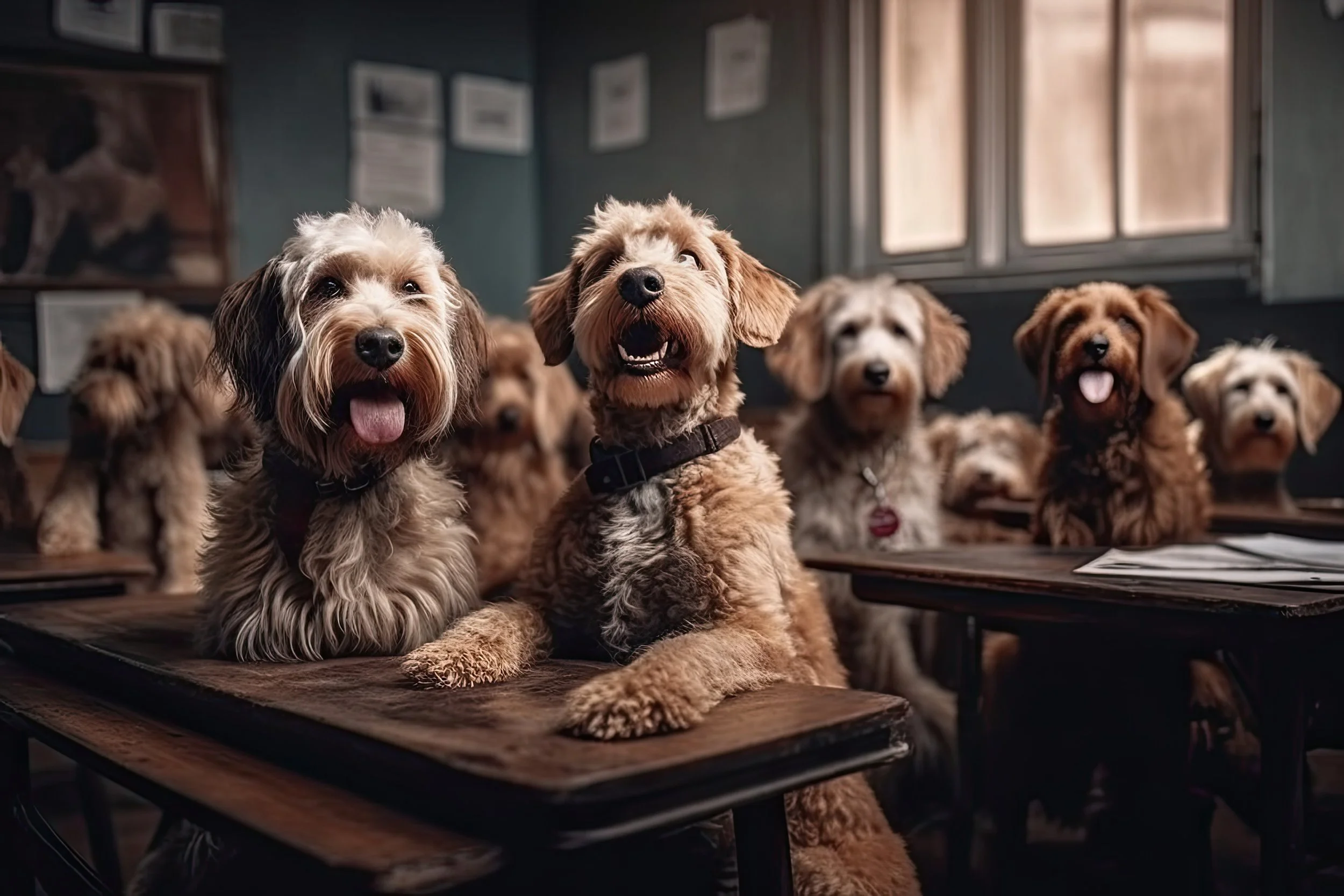Learning to Dog
Teaching an old dog the new tricks he should have learned as a puppy
There are certain milestones every dog owner expects and celebrates as their puppy grows into a dog – learning to walk on a leash, understanding basic commands and housebreaking, for instance. Many puppies accomplish this behavioral trifecta at just a few months old. But what about older dogs who weren’t trained in puppyhood? While there are few experiences as rewarding as rescuing a dog, adopters need to be patient and invest time teaching their new pet to simply be a dog.
I’m no dog behavioralist, but I have rescued my fair share of pets from puppy mills, hoarding situations, and neglect. From my experience, here’s what adopters should expect.
Don’t gauge a dog’s personality by how it behaves in the shelter. Even the nicest shelters are stressful for dogs. Not only are they suddenly in a new environment with lots of barking and noise, they’re also in small pens and they may not get daily walks. This can cause a typically calm dog to pace, bark, or jump, so don’t write off a dog as high-energy or aggressive based on how it acts in the shelter. Ask the shelter workers or foster parent what they’ve seen from the dog in their one-on-one interactions. Spend some time getting acquainted to establish a connection and make sure your energy level matches the dog’s. If possible, consider fostering the dog for several days or weeks before officially adopting it.
Plan for food aggression. Sadly, several of my pups did not enjoy daily meals in their early years. This made them territorial of their food at mealtimes, meaning my otherwise sweet-as-pie dogs would literally bite the hand the feeds them if I interrupted their dinner time. Worse yet, they’d snap at other dogs who ventured too close to the food bowl. If you aren’t able to feed your dogs separately, monitor them to ensure they stick to their own bowls and give them plenty of space and time to enjoy every last morsel of their food. (And be patient – many dogs grow out of this as they become comfortable and realize no one is plotting to take their food away.)
Prepare for escape artists. The first time I opened my pup Corey’s carrier to welcome him home, he darted for the back door. The first time I let him outside, he made a beeline for the back gate and tried to escape me. Uncertain dogs have a tendency to run, so make sure to open doors carefully. Ask shelters or fosters if your new addition is a known “runner,” and plan accordingly. A runner may not be a good fit for your household if you don’t have a fenced yard. Knowing and understanding a dog’s habits will help ensure a seamless transition for owner and companion alike.
Teach your dog to walk on a leash. Five years after her rescue, my sweet Alice Mae still refuses to walk in the grass; she prefers to walk on pavement while gazing up at me instead of sniffing her surroundings like other dogs. This is because she spent her formative years as part of an extreme hoarding situation. She, her mother, and 40-plus other dogs were kept in a garage, and it was immediately apparent that she had never seen grass before. I introduced her to leash-walking slowly and she took to it within weeks, despite her idiosyncrasies. Start small, be patient and shower your dog with praise and positive reinforcement. Remember that their early experiences will shape the way they take to leash walking and other “normal” dog activities.
Be patient. I’ve adopted pets who immediately jumped into my arms and I’ve saved others who spent weeks slowly checking me out before they decided I was a safe human. I wouldn’t trade either experience for the world. Don’t despair if your new pet isn’t an immediate cuddler. Give him the space and time to adjust, build confidence and earn trust. He may prefer a dog bed in a quiet room to a spot by his humans while he acclimates to his new home and family.
Enjoy the small things. Your rescue dog (or cat) may never have had a toy, a bed or a treat. By introducing these small luxuries and giving your pet lots of love, you’ll quickly become his hero. From personal experience, the extra time and patience are well worth the enormous love, admiration and companionship you’ll receive in return.
Your new dog or cat will quickly look to you as his pack leader, but it may take some time to instill manners and desirable behaviors. Be patient and consider reaching out to a dog trainer or behavioral expert if you need help or expertise. Acclimating your new pet may not happen overnight, but it will be one of the most rewarding things you ever do.

